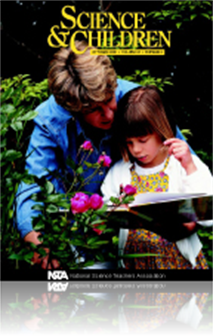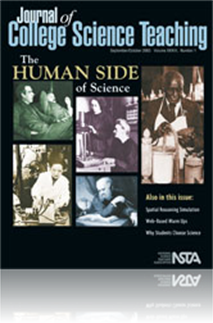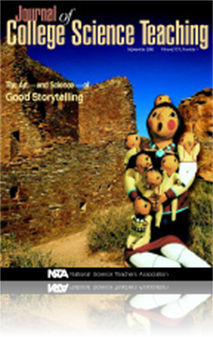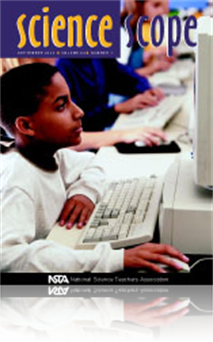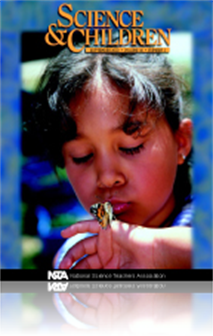All Resources
Journal Article
The students involved in this project attended an urban school in the Anchorage School District. The 52 students in the K, 1, 2 multi-age inclusive classroom (21 kindergarten students, 20 first-grade students, and 11 second-grade students) spent the ...
Journal Article
In this article, an extended lab activity from a common cookbook approach is modified to determine the percent mass of water in copper (II) sulfate pentahydrate crystals. This modified approach significantly enhances students' understanding of matter...
Journal Article
Float It Down the River: The great water transport contest
Float it Down the River is an exciting design activity that involves students in a hands-on, creative project in which they use higher order thinking skills in a motivating setting. Students working in groups of four to six are challenged to design a...
Journal Article
Blind Students: Facing Challenges in a College Physics Course
Visually impaired students with different educational backgrounds may differ in their analytical and mathematical preparedness, which presents unique obstacles for those who wish to successfully complete a college physics course. This article relates...
Journal Article
How <em>Not</em> to Teach Historical Cases in Science
Not all methods of applying history to teaching science are valid. Rational reconstructions, in particular, present idealized and misleading models. Short vignettes or anecdotes can oversimplify science. Recovering historical context, however, is cri...
Journal Article
As part of NASA’s Learning Technologies Project, NASA Quest has been connecting students to the people of NASA through the various pages at the website—Learning Technology Channel, Space Team Online, Aerospace Team Online, and Women of NASA. The ...
Journal Article
Three-dimensional illusions offer an ideal and motivating arena for computer technology applications, visual processing investigations, art and science connections, and fun. By offering experience in optical illusions, the author presents an arena in...
Journal Article
The Biological Sciences Curriculum Study (BSCS) explored integrated science at the high school level through a study funded by the National Science Foundation (NSF). Although successful programs were developed for elementary and middle school levels,...
Journal Article
Using problem-based learning and role-playing, students analyze the geological origins of the Galapagos Islands, their colonization, species formation, and threats to their biodiversity in this story of a student caught between local fishermen and go...
Journal Article
Tech Trek: Integration and Presentation
Successful science-fair participants often impress judges with professional-looking displays of their data. Understanding how to use presentation and spreadsheet software to create these displays is a very useful skill. A great way to teach students ...
Journal Article
Science learning can happen anywhere! Using initiative and creativity, teachers of various subjects can create interdisciplinary learning opportunities. In this article, the authors describe how they used the schoolwide theme “Dive into Oceans” t...
Journal Article
Many science teachers in the Los Angeles School District were concerned over the low number of students electing to take a third year of science. Based on this concern, this articles focuses on the science reform effort using integrated/coordinated s...
Journal Article
What has six legs, three body parts, and is loved by second-grade students? An insect! In the unit described here, students engaged in a comprehensive insect study that incorporated the National Science Content Standards A: Life Science and C: Scienc...
Journal Article
The Idea Bank provides tips and techniques for creative teaching, in about 1,000 words. In this month’s Idea Bank, find out what students need to consider when determining the real "season reason."...
Journal Article
Intended as a contest to promote teamwork and encourage innovative thinking with a focus on nutrition, the Lunch Box Derby challenges fourth- and fifth-grades students to design, build, and race cars made from fresh produce. Each class is allowed one...


